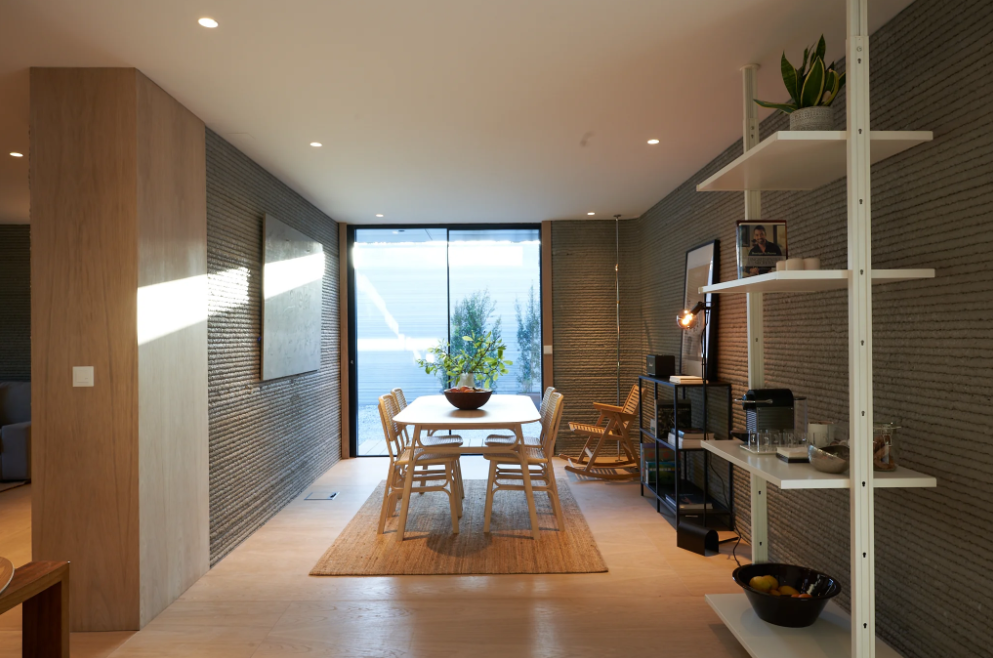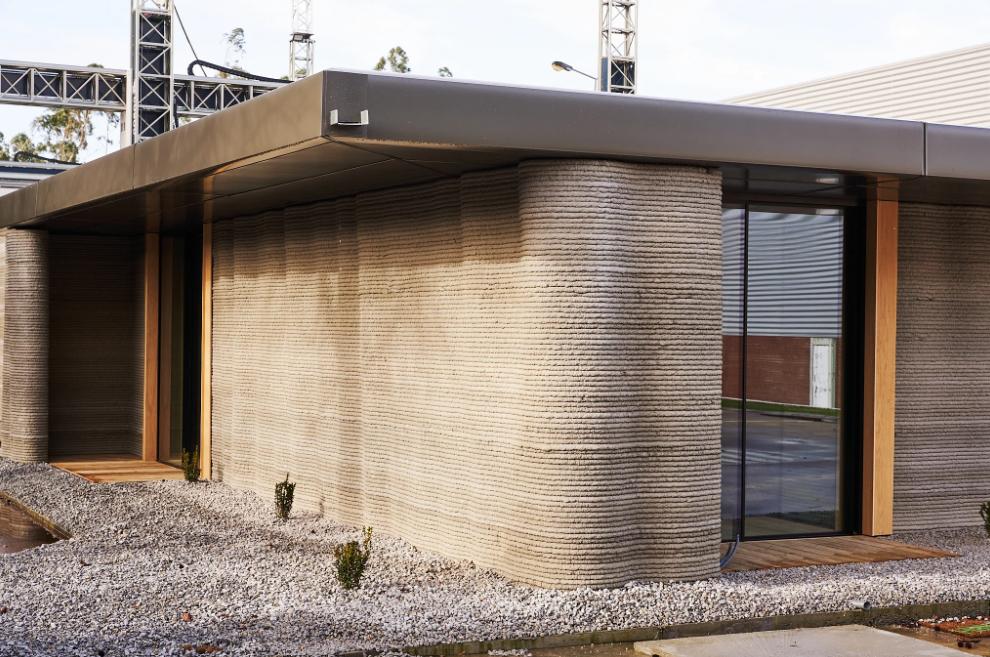Join the Expert Committee for the 2024 3D Printing Industry Awards to help select the winners!
Portuguese company Havelar has announced the completion of what it claims as Portugal’s first 3D printed house.
Situated within the Greater Porto vicinity, the 80m2 two-bedroom house was produced within 18 hours using the BOD2 printer by COBOD. This swift printing process highlights the efficiency and speed characteristic of 3D printing technology in the construction sector. This 3D printed house was constructed with assistance from architects Aires Mateus, Glória Cabral, and Francis Kéré.
Patrick Eichiner, CEO and Co-Founder of Havelar, commented that beyond functioning solely as a printing or construction entity, the company advocates for Construction 2.0 principles. This approach enables Havelar to deliver fully constructed houses within a timeframe of less than 2 months, substantially below prevailing market rates. The company is proficient in providing modern, mid-market designed residences at a cost starting from €1,500 per m2.

Havelar focuses on eco-friendly practices
In stark comparison to Porto’s average price of €3,104/m2, as reported by the Portuguese National Statistics Institute, Havelar’s offering stands out. This significant difference in cost is primarily credited to the optimized efficiency and rapid project completion facilitated by 3D printing construction technology, says the company.
Rodrigo Vilas-Boas, Co-Founder of Havelar, highlighted the transformative nature of the company’s business approach, emphasizing the aim to collaborate with partners who align with their vision of constructing sustainable and inclusive communities. With €150,000, a young couple can realize their dream home in an area equipped with excellent access and amenities.
Henrik Lund-Nielsen, Founder & General Manager of COBOD said, “When you are setting very ambitious goals, there is always a risk, that these are not realized, but if you do not aim high, you will reach nowhere. We are happy to support Havelar in their ambitious endeavors, our printers are open source when it comes to materials and can print with many different types.”
Havelar prioritizes not only speed and affordability in housing construction but also environmental impact. While 3D construction printing inherently reduces construction waste, Havelar has set an ambitious target. The company aims to achieve carbon neutrality in its operations by 2030. To achieve this, Havelar is exploring the use of alternative building materials like earth, recycled materials, and bio-based options like straw.

Impact of construction 3D printing
Construction 3D printing is transforming the industry by facilitating intricate designs, expediting construction in challenging environments, and promoting sustainable building practices through innovative materials. This technology presents possibilities for groundbreaking achievements like disaster-resilient housing, eco-friendly structures, and even lunar construction.
Just recently, Builtech Construction Group, partnered with the City of Walnut and the Los Angeles County Fire Department, to construct the first fire-resistant, on-site-built concrete Accessory Dwelling Unit (ADU) in the U.S. Led by Builtech, the project is said to be a work in progress with plumbing and sewage system installations underway. With a focus on eliminating ‘fuel,’ the project employs non-combustible materials and reinforces vulnerable areas.
Before this, Emaar Properties unveiled Dubai’s first-ever 3D printed villa, initially delayed by the COVID-19 pandemic. Designed by architecture firm U+A, the villa features three bedrooms, four bathrooms, and integrates Xiaomi Smart Home technology. Aligning with Dubai’s ‘Smart City’ initiative, Emaar aims for 25% of construction projects to be 3D printed by 2030. Collaborating with COBOD and Xiaomi, Emaar utilizes COBOD’s BOD2 printer for its efficiency.
According to a report by The New York Times, NASA has revealed plans to 3D print houses on the moon. Collaborating with Texas-based ICON, NASA targets moon habitation by 2040 through its Artemis mission. ICON received $30 million in 2020 and an additional $57.2 million in 2022 for Project Olympus. This initiative aims to develop a concrete 3D printer using lunar surface materials. The goal is to create homes suitable for both astronauts and civilians, fostering a permanent human colony on the moon and, eventually, Mars.
What 3D printing trends do the industry leaders anticipate this year?
What does the Future of 3D printing hold for the next 10 years?
To stay up to date with the latest 3D printing news, don’t forget to subscribe to the 3D Printing Industry newsletter or follow us on Twitter, or like our page on Facebook.
While you’re here, why not subscribe to our Youtube channel? Featuring discussion, debriefs, video shorts, and webinar replays.
Featured image shows the inaugural Havelar house, a collaboration with renowned architects Aires Mateus, Glória Cabral, and Francis Kéré, is a showcase of what is achievable with 3D construction printing technology. Photo via COBOD.


